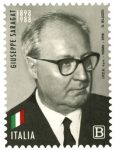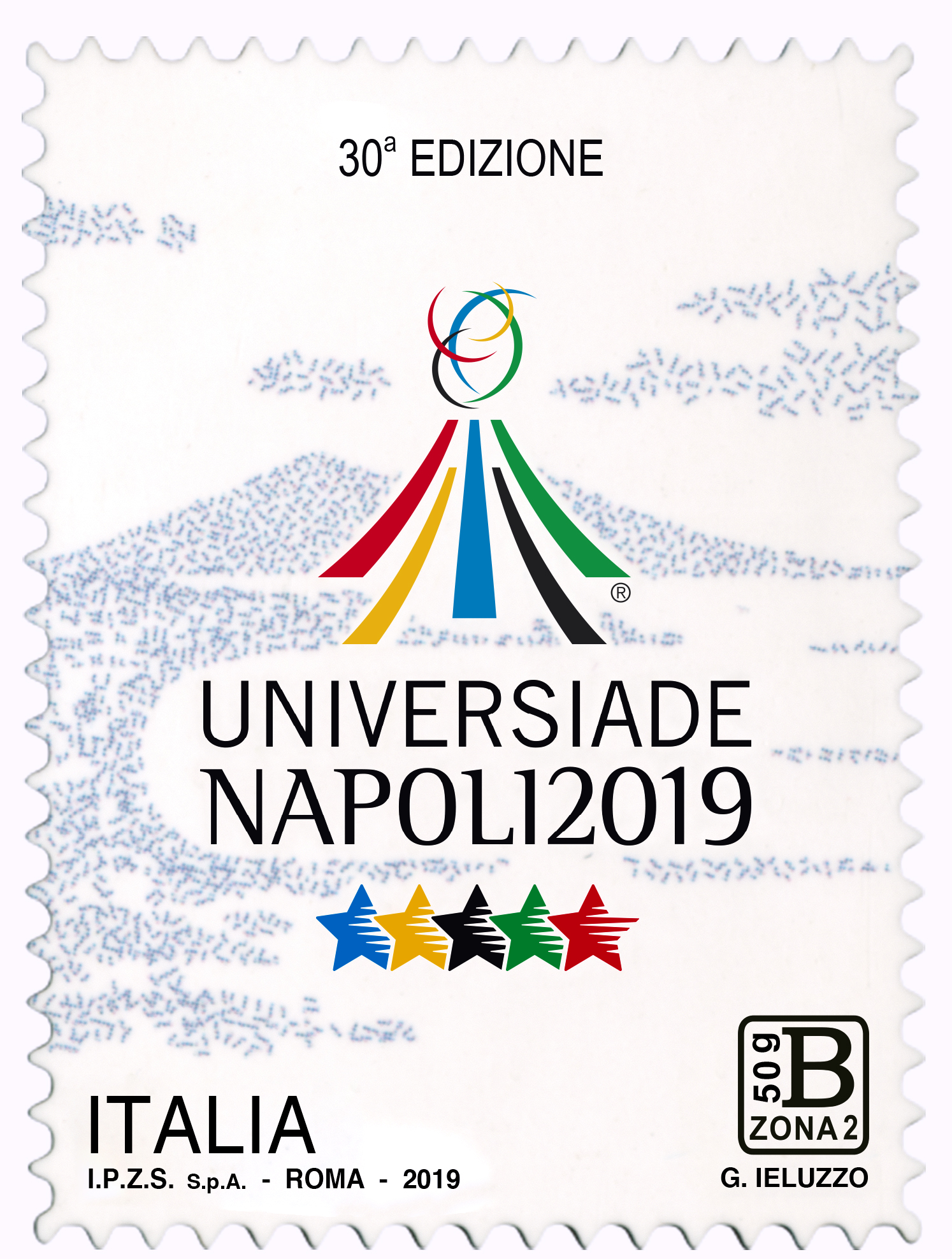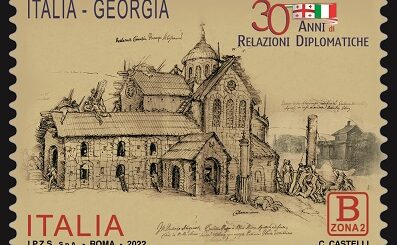POSTE ITALIANE 16^ Emissione del 22 giugno 2018 – Giuseppe SARAGAT
Giuseppe SARAGAT
Giuseppe Saragat , nato a Torino il 19 settembre 1898 e morto a Roma il 11 giugno 1988, è stato un politico e diplomatico italiano, quinto Presidente della Repubblica Italiana e primo socialista a ricoprire la carica.
Protagonista della convulsa storia italiana del secondo dopoguerra, leader storico della famiglia socialista e, in particolare, del Partito Socialista Democratico Italiano, Saragat fu anche Presidente dell’Assemblea Costituente, più volte vicepresidente del Consiglio dei Ministri e Ministro degli affari esteri; ambasciatore a Parigi.
Come Capo dello Stato ha conferito l’incarico a quattro Presidenti del Consiglio: Aldo Moro, Giovanni Leone(1968), Mariano Rumor (1968-1970) ed Emilio Colombo (1970-1972).
Figlio di immigrati sardi, Giuseppe Saragat nacque a Torino, provenendo da una famiglia appartenente alla media borghesia italiana.
Laureato in Scienze Economiche e Commerciali, si sposò con Giuseppina Bollani ed ebbe due figli: Giovanni e Ernestina .
Gli esordi in politica
Nel 1922 aderì al socialismo, non tanto per vocazione ideologica, quanto per solidarietà nei confronti della gente povera, ovvero quel proletariato che andava organizzandosi, oppresso dai “figli di papà” come ebbe a dire lui stesso. Socialista del filone riformista e umanitario, si nutrì della cultura politica di Filippo Turati, divenendo così esponente di primo piano del Partito Socialista Unitario, il partito nato il 4 ottobre 1922 dalla espulsione dei gradualisti turatiani dal PSI, del quale Giacomo Matteotti era segretario.
Il PSU fu, forse, il partito più perseguitato d’Italia, all’epoca del regime fascista. Oltre alla barbara uccisione del suo segretario Matteotti (10 giugno 1924), infatti, fu il primo a essere sciolto, il 14 novembre 1925, a causa del fallito attentato a Mussolini del suo iscritto Tito Zaniboni, avvenuto il 4 novembre precedente. Il 26 novembre 1925, tuttavia, si costituì un triumvirato, composto da Claudio Treves, Giuseppe Saragat e Carlo Rosselli che, il 29 novembre successivo, ricostituirono clandestinamente il PSU come Partito Socialista dei Lavoratori Italiani (PSLI).
L’esilio
Dopo l’approvazione delle leggi eccezionali che instaurarono la dittatura fascista in Italia, Saragat scelse la via dell’esilio, valicando il confine elvetico, in compagnia dell’amico Claudio Treves, nella notte tra il 19 e il 20 novembre 1926 e poi trovò rifugio in Austria. A Vienna entrò in contatto con alcuni autorevoli esponenti dell’austromarxismo che teorizzavano la conciliabilità del pensiero di Marx con la socialdemocrazia (in particolare Renner e Bauer) e, più in generale, con personalità della socialdemocrazia mitteleuropea che influenzarono la sua formazione intellettuale.
Il 12 dicembre 1926, l’anziano Filippo Turati, pur essendo privato del passaporto, riuscì a fuggire in Corsica insieme con Sandro Pertini, con un motoscafo guidato da Italo Oxilia. A Parigi, i due furono presto raggiunti da Treves e, nel 1929, anche da Saragat.
In Francia, per sbarcare il lunario, Saragat svolse il mestiere di rappresentante di vini. Contemporaneamente, strinse con il socialista Pietro Nenni un’alleanza politica che porterà, il 19 luglio 1930, al rientro del PSULI di Filippo Turati, nel Partito Socialista Italiano (Parigi, XXI Congresso del PSI). Nacque allora il controverso rapporto tra i due leader “storici” del socialismo italiano, a volte denominati “i cari nemici” o “gli amici-rivali”.
Saragat e la Resistenza
Saragat rientrò in patria all’indomani del 25 luglio 1943 e, il 25 agosto, a Roma, prese parte alla prima direzione che sancì la ricostituzione del Partito Socialista Italiano in Italia (con il nome di PSIUP); fu eletto alla nuova direzione del partito e nominato direttore dell’Avanti!.
Con l’occupazione tedesca di Roma, Saragat entrò nella Resistenza. Il 28 settembre, con Nenni e Pertini, rinnovò il patto di unità d’azione tra PSI e PCI. Il 18 ottobre, sempre insieme con Pertini, fu arrestato dalle autorità tedesche e venne rinchiuso nel carcere romano di Regina Coeli, prima nel VI braccio (politici), poi nel III (condannati a morte). Riuscì a evadere il 24 gennaio 1944 grazie a un gruppo di partigiani che falsificarono un ordine di scarcerazione[8]. Riprese a lavorare clandestinamente alla direzione dell'”Avanti!”, nascondendosi in casa di Giovanni Salvatori, che poi sarà trucidato alle Fosse Ardeatine. Fu ministro senza portafoglio nel 1944 durante il governo Bonomi II. Successivamente si trasferì a Milano, dove lavorò per il partito socialista.
Presidente della Repubblica
Alle elezioni del Presidente della Repubblica del 1962, Saragat era stato, sino all’ultimo, l’avversario più temibile per Antonio Segni. Presentato come candidato di bandiera del PSDI, era riuscito a far confluire sul suo nome anche i voti del PSI (a partire dal 2º scrutinio) e poi quelli del PCI (dal 3° in poi). Era stato sconfitto solo grazie all’appoggio determinante, in favore di Segni, dei voti della destra monarchica e neofascista.
Al primo turno delle successive elezioni del 1964, Saragat fu presentato come candidato comune dei due partiti socialisti, mentre la DC e il PCI avevano puntato, rispettivamente, su Giovanni Leone e Umberto Terracini. Emerse quasi subito, tuttavia, una candidatura alternativa in casa democristiana, quella di Amintore Fanfani, che diventò progressivamente sempre più consistente. Dopo sette turni infruttuosi, i due partiti socialisti, vista la temporanea impossibilità di una candidatura comune della maggioranza di centro-sinistra, decisero di astenersi. Al 10º scrutinio i socialisti del PSI cominciarono a votare per Pietro Nenni che, a partire dal 13°, divenne il candidato comune anche di PSDI e PCI; nel frattempo, Fanfani si ritirava dalla contesa. Dopo 15 scrutini, si ritirò anche Giovanni Leone e, al 18°, ci fu l’accordo tra democristiani e socialdemocratici per votare Saragat, mentre PCI e PSI continuavano a sostenere Nenni. Infine, dopo tre votazioni nelle quali i leaders dei due partiti socialisti si erano affrontati in uno scontro quasi “fratricida”, Nenni chiese ai parlamentari che lo supportavano di far confluire i propri voti a quelli dell’eterno “amico-rivale”. Giuseppe Saragat fu così eletto Presidente della Repubblica Italiana, il 28 dicembre 1964, al ventunesimo scrutinio, con 646 voti su 963 componenti l’assemblea (67,1%), in quella che, sino ad allora, era stata l’elezione più contrastata alla massima carica dello Stato.
Saragat fu assolutamente rispettoso della volontà del Parlamento: nel suo settennato, non rinviò mai un provvedimento alle Camere per riesame e conferì sempre l’incarico di formare il governo agli esponenti indicati dalla maggioranza parlamentare. Sembra infatti che, per tale motivo, il tentativo di golpe orchestrato da Junio Valerio Borghese, per la notte tra il 7 e l’8 dicembre 1970, prevedesse la cattura e il suo rapimento, da effettuarsi a cura del maestro venerabile della Loggia P2, Licio Gelli. Fu anche “candidato di bandiera” del partito socialdemocratico nei primi 15 scrutini delle successive elezioni presidenziali del 1971, che portarono al Quirinale Giovanni Leone. Terminato il suo mandato, divenne di diritto senatore a vita ed ebbe anche l’occasione di ritornare alla guida del suo partito, di cui resse la carica di segretario, tra il marzo e l’ottobre del 1976.
Socialista liberale, Saragat è considerato il padre della dottrina socialdemocratica italiana. Tuttavia, in luogo dell’aggettivo “socialdemocratico”, egli preferiva usare, per descrivere sé stesso, la definizione di socialista democratico. Riformista, egli accettò l’adesione dell’Italia all’alleanza occidentale (fu favorevole al Piano Marshall e all’ingresso dell’Italia nella NATO); Saragat era convinto che la socialdemocrazia potesse essere politicamente un valore aggiunto e che avrebbe potuto avere una posizione elettoralmente egemonica, come del resto avveniva nei paesi del nord-Europa.
Morì nel 1988 e le sue spoglie si trovano presso il Cimitero del Verano, a Roma.
Giuseppe Saragat, born in Turin on 19 September 1898 and died in Rome on 11 June 1988, was an Italian politician and diplomat, the fifth President of the Italian Republic and the first Socialist to hold office.
Protagonist of the convulsive Italian history after World War II, historical leader of the socialist family and, in particular, of the Italian Democratic Socialist Party, Saragat was also President of the Constituent Assembly, several times Vice-President of the Council of Ministers and Minister of Foreign Affairs; ambassador to Paris.
As Head of State, he appointed four Presidents of the Council: Aldo Moro, Giovanni Leone (1968), Mariano Rumor (1968-1970) and Emilio Colombo (1970-1972).
Son of Sardinian immigrants, Giuseppe Saragat was born in Turin, coming from a family belonging to the Italian middle class.
A graduate in Economics and Business Sciences, he married Giuseppina Bollani and had two sons: Giovanni and Ernestina.
The beginnings in politics
In 1922 he joined socialism, not so much for ideological vocation, but for solidarity towards the poor people, or that proletariat that was organizing itself, oppressed by the “sons of father” as he himself said. Socialist in the reformist and humanitarian vein, he fed on the political culture of Filippo Turati, thus becoming a leading exponent of the Socialist Unity Party, the party born October 4, 1922 from the expulsion of Turatiani gradualists from the PSI, of which Giacomo Matteotti was secretary.
The PSU was, perhaps, the most persecuted party in Italy, at the time of the fascist regime. In addition to the barbaric killing of his secretary Matteotti (10 June 1924), in fact, he was the first to be dissolved on November 14, 1925, due to the failed attempt on Mussolini of his registered Tito Zaniboni, which occurred on 4 November. On November 26, 1925, however, a triumvirate was formed, composed of Claudio Treves, Giuseppe Saragat and Carlo Rosselli who, on November 29th, secretly re-established the PSU as the Socialist Party of Italian Workers (PSLI).
exile
After the approval of the exceptional laws that established the fascist dictatorship in Italy, Saragat chose the path of exile, crossing the Swiss border, in the company of his friend Claudius Treves, on the night between 19 and 20 November 1926 and then found refuge in Austria. In Vienna he came into contact with some authoritative exponents of Austrianism who theorized the conciliability of Marx’s thought with social democracy (in particular Renner and Bauer) and, more generally, with personalities of the Central European social democracy who influenced his intellectual formation.
On 12 December 1926, Elder Filippo Turati, despite being deprived of his passport, managed to escape to Corsica along with Sandro Pertini, with a motorboat guided by Italo Oxilia. In Paris, the two were soon joined by Treves and, in 1929, also by Saragat.
In France, to make ends meet, Saragat worked as a wine representative. At the same time, he joined the socialist Pietro Nenni with a political alliance that will lead, on July 19, 1930, to the return of Filippo Turati’s PSULI, to the Italian Socialist Party (Paris, XXI Congress of the PSI). The controversial relationship between the two “historical” leaders of Italian socialism, sometimes called “dear enemies” or “friends-rivals”, arose.
Saragat and the Resistance
Saragat returned home the day after July 25, 1943 and, on August 25, in Rome, took part in the first direction that enshrined the reconstitution of the Italian Socialist Party in Italy (under the name of PSIUP); he was elected to the new party leadership and appointed director of the Avanti !.
With the German occupation of Rome, Saragat entered the Resistance. On September 28, with Nenni and Pertini, he renewed the unity unity agreement between PSI and PCI. On 18 October, still together with Pertini, he was arrested by the German authorities and was locked up in Regina Coeli’s Roman prison, first in the VI arm (politicians), then in the III (sentenced to death). He managed to escape on 24 January 1944 thanks to a group of partisans who falsified an order of release [8]. He resumed working illegally in the direction of the “Avanti!”, Hiding in the house of Giovanni Salvatori, who was then massacred at Fosse Ardeatine. He was minister without portfolio in 1944 during the Bonomi II government. Later he moved to Milan, where he worked for the socialist party.
President of the Republic
In the elections of the President of the Republic of 1962, Saragat had been, until the end, the most formidable opponent for Antonio Segni. Presented as a candidate for the flag of the PSDI, he had succeeded in making his votes also converge on his name (starting from the second ballot) and then those of the PCI (from the 3rd onwards). He had been defeated only thanks to the decisive support, in favor of Segni, of the votes of the monarchist and neo-fascist right wing.
In the first round of the subsequent elections of 1964, Saragat was presented as a joint candidate of the two socialist parties, while the DC and the PCI had respectively focused on Giovanni Leone and Umberto Terracini. Almost immediately emerged, however, an alternative candidacy in the Christian Democrat home, that of Amintore Fanfani, which became progressively more consistent. After seven unsuccessful rounds, the two socialist parties, considering the temporary impossibility of a common candidacy of the center-left majority, decided to abstain. At the 10th scrutiny the Socialists of the PSI began to vote for Pietro Nenni who, starting from the 13th, became the common candidate also of PSDI and PCI; in the meantime, Fanfani withdrew from the dispute. After 15 ballots, Giovanni Leone also retired and, at the 18th, there was an agreement between Christian Democrats and Social Democrats to vote Saragat, while PCI and PSI continued to support Nenni. Finally, after three votes in which the leaders of the two socialist parties had faced in an almost “fratricidal” clash, Nenni asked the parliamentarians who supported him to merge their votes with those of the eternal “friend-rival”. Giuseppe Saragat was elected President of the Italian Republic on December 28, 1964, at the twenty-first ballot, with 646 votes out of 963 members of the assembly (67.1%), in what, until then, had been the most opposed election at the highest office of the State.
Saragat was absolutely respectful of the will of Parliament: in his seven-year term, he never referred to a provision to the Chambers for review and always conferred the task of forming the government to the exponents indicated by the parliamentary majority. It seems that, for this reason, the coup attempt orchestrated by Junio Valerio Borghese, for the night between 7 and 8 December 1970, provided for the capture and its abduction, to be carried out by the venerable master of the P2 Lodge, Licio Gelli. He was also a “flag candidate” of the Social Democratic party in the first 15 scrutinies of the subsequent presidential elections of 1971, which led to the Quirinale Giovanni Leone. After his mandate, he became a senator for life by right and also had the opportunity to return to the leadership of his party, of which he held the office of secretary, between March and October 1976.
Liberal socialist, Saragat is considered the father of the Italian social democratic doctrine. However, in place of the adjective “social democrat”, he preferred to use, to describe himself, the definition of democratic socialist. Reformist, he accepted Italy’s accession to the Western alliance (he was in favor of the Marshall Plan and the entrance of Italy into NATO); Saragat was convinced that social democracy could be an added value politically and could have had an electorally hegemonic position, as was the case in the countries of northern Europe.
He died in 1988 and his remains are at the Verano Cemetery in Rome.
| data /date | 22.06.2018 |
| N. CATALOGO / N. CATALOG | Michel 4049 – YT 3810 – UN. 3892 |
| dentellatura/Serration | 11 |
| stampa/printing | fustellatura – rotocalco |
| tipo di carta/paper type | bianca patinata neutra |
| stampato | I.P.Z.S. Roma |
| fogli/sheet | 45 |
| dimensioni/dimensions | 40 x 30 mm |
| disegnatore /designer | G. Ieluzzo |
| tiratura | 400.000 |







